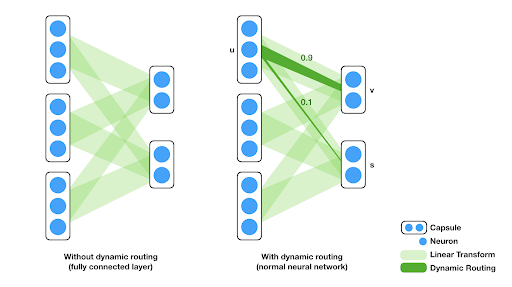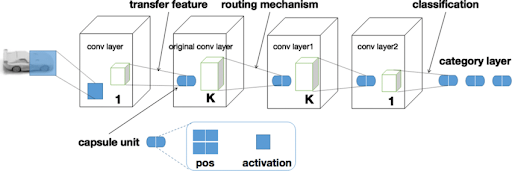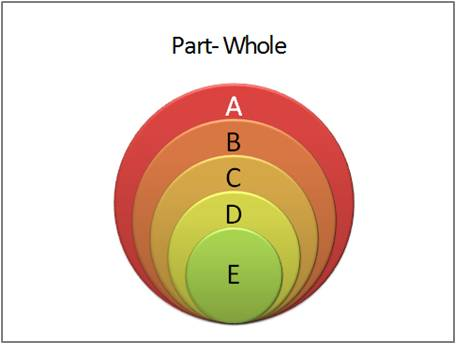
Hey pupil! Welcome to the next lecture on modern neural networks. I hope you are doing great. In the previous lecture, we saw the EffcientNet neural network, which is a convolutional Neural Network (CNN), and its properties. Today, we are talking about another CNN network called the capsule neural network, or CapsNets. These networks were introduced to provide the capsulation in CNNs to provide better functionalities.
In this article, we will start with the introduction of the capsule neural network. After that, we will compare these with the traditional convolutional neural networks and learn some basic applications of these networks. So, let’s start learning.
Introduction to Capsule Neural Networks
Capsule neural networks are a type of artificial neural network that was introduced to overcome the limitations of CNNs. In 2017, these modern neural networks were designed by Geoffrey Hinton and his team working in the Google AI research center.
These are some of the most popular and searched neural networks because they deal with the inefficiency of CNN in recognizing the results when the input data has different orientations. The capsule Neural networks are made by getting inspiration from the visual cortex of the human brain to process information.
The capsule neural network is one of the most prominent deep learning architectures and is widely used in fields like computer vision for processes like image classification, object detection, and segmentation. If you know about convolutional neural networks, then you must know that they are relatively difficult to process and require a great deal of information to work properly. Hence, to make the neural network more powerful, different neural networks, such as capsule neural networks and EffiecnetNet, are introduced.
Capsule Neural Networks vs. Traditional Neural Networks
The neural networks are categorized in different ways on the basis of their arrangement of layers. Usually, the neural networks have the same structure but slightly different performance and other features. However, the workings of CapsNet are far more different from those of traditional neural networks; therefore, there is a need for a detailed study of structure and performance. Here are some key features of Capsule neural networks that make them different from other traditional neural networks:
Capsules of Neurons
The name clearly specifies the difference in the workings of this neural network. These are different because the basic building block of Capsnets is the capsule of the neuron. Unlike traditional neural networks, where the neurons are the basic building blocks, CapsNet has a group of neurons (capsule) as the basic building block. Hence, we define the capsule as:
A capsule in the Capsule neural network is the group of neurons that efficiently encodes the features of the images, such as position, orientation, and size.
These features are called the pose of the images and are important in the working of neural networks, especially when networks are specialized for image recognition and related fields.
Feature Hierarchy
The most prominent difference to discuss is the structure of the capsule neural network. The capsules are arranged in the form of a hierarchy, where each capsule is responsible for extracting information of a specific type at the given level of abstraction.
The traditional neural networks are arranged in the form of a flat hierarchy, which causes limitations in their working. Capsule neural networks have complex relationships among the features, and therefore, better results can be extracted from the calculations.
Dynamic Routing Algorithm
A main difference between traditional and capsule neural networks is the dynamic routing mechanism, which is the main power behind the success of this neural network. It is called dynamic routing because it determines the relationship between the adjacent layer and capsule. As a result, the details of the features in the image are effectively determined.
Dynamic routing is helpful in recognizing objects at varying points and angles because capsules reach a consensus on the representation and presence of the properties of the data entity. This is different from traditional neural networks, where the weights are assigned to every neuron, and as a result, these produce the results needed to extract the information.
Pose Estimation in CapsNets
The way CapsNets recognize the images is up to par because these not only identify the objects but can also identify the poses and angles of the images. In this way, they can recognize the images even if the orientation of the images changes. This is the basic working of the CapsNets.
On the other hand, traditional neural networks require a great deal of data to recognize the images at a certain point, and there are errors when the image alignment is changed. Hence, the CapsNets require less data and provide more efficiency with the help of pose estimation.
This feature helps to regenerate the responses with the novel viewpoint even if the images are deformed. Traditional neural networks are not able to explicitly model pose information. These require extensive data arguments and a large variety of information in the form of datasets.
Computational Complexity of CapsNets
The CapsNets are arranged in the form of capsules, which enhances the complexity of the network. No doubt, the results obtained are more efficient, but the complexity level of CapsNet is higher than that of traditional neural networks. The capsules are connected in multiple layers, and to deal with them, multiple iterations are required.
Dynamic routing is responsible for the transfer of the output of one capsule to the next capsule in the interconnected layer in a specific pattern. The mechanism of dynamic routing is more expensive.
Interpretable Representations of Results
Another advantage of using CapsNets is its interpretable representation of the results. It can be defined as:
“The interpretable representation of the neural network is its ability to disentangle the representation of the output of the learned features.”
The results of the CapsNets are interpretable and, therefore, more understandable. It provides semantically understandable outputs. As a result, these serve as a bridge between the complex outputs of neural networks and human understandable results.
Pooling layers in Capsule Network
The pooling layer is a special type of layer in the neural network that is responsible for the reduction of the dimensions of a feature map. It is done with the help of downsampling. In the case of capsule neural networks, there are no pooling layers; instead, the same functionality is accessed with dynamic routing. As a result, the capsule network shows state-of-the-art output for the images.
Part-whole Relationships in CapNets
The part-whole relationship in neural networks is the connection between different parts of the same object. For instance, there is a part-whole connection between the table and the areas where different legs are connected to the flat board to make a table.
It is an important feature in fields like computer vision for processes like object detection, image segmentation, etc. In CapsNet, the part-whole relationship is strong and powerful because these use vectors to encode the pose of objects in an image. On the other hand, traditional CNN uses pooling layers for the same purpose, and it is difficult to get information about part-whole relationships.
Keeping all these differences in mind, we have created a tale for you to quickly review the difference between these layers:
Feature |
Traditional Neural Network |
CapsNets |
Building Block |
Neuron |
Capsule (Group of neurons) |
Layer Connection |
Static |
Dynamic |
Computational complexity |
Less |
More |
Efficacy of data |
Less |
More |
Maturity |
More |
Less |
Hierarchy Type |
Flat |
Interconnected |
Feature Mapping |
Pooling Layer |
Dynamic Routing |
Part-whole Relationship |
Pooling layer |
Vectors |
Applications of CapsNet
The capsule neural network has various applications in multiple departments. There is a lot of detail about each of them, but we have set out a simple list of applications for you. Here is it:
Computer Vision
In the field of computer vision, there is a great deal of interest in capsule neural networks because they provide the best output in different orientations. The features of CapsNets are helpful in areas like image recognition, face recognition, medical imaging, etc.
Natural Language Processing
Natural language processing requires neural networks that can subdivide the input in different ways. The capsule neural network helps in the processes of document classification and sentimental recognition.
Robot and Automation Industry
The industry of robotics and its automation require the most efficient ways to teach object recognition to robots. The highly efficient mechanism of the capsule network is perfect for fields like robotics and automation. It helps with object manipulation and visual SLAM in the mentioned industries.
Hence, the capsule neural network is an important type of modern neural network that helps get image-related outputs more efficiently. These are made of capsules of neurons instead of using them singularly. Moreover, the hierarchy and routing systems help the users get the t output. We have seen multiple features of this neural network that are useful and better than the traditional neural network. However, these are more complicated to deal with, but overall, there are multiple applications of capsule neural networks. If you want to know more about modern neural networks then stay with us 9n the next session.






